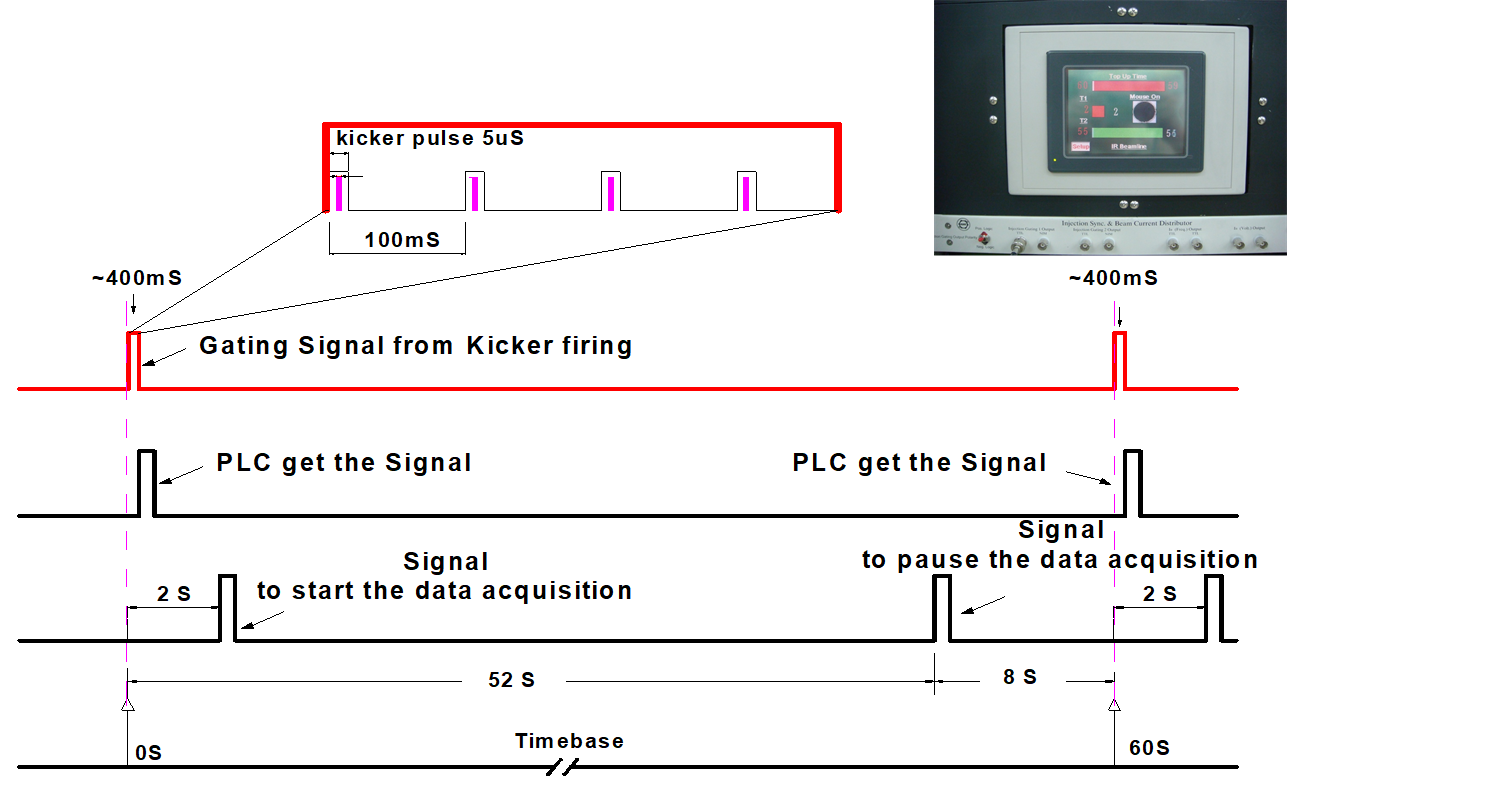The top-up mode is the standard mode of operation at the National Synchrotron Radiation Research Center. Running constant beam current beamlines can take the advantage of the higher flux of photon, brightness and constant heat load as data acquisition. However, a damping noise-induced as injecting electron bunch into storage ring from the boost ring always makes a random interference in the mid-infrared range during the course of top-up mode operation. In order for eliminating the spectral noise as electron injection, an innovative gating system was constructed and which is to generate a trigger pulse to steer the data acquisition program (OMNICTM) controlling the endstation of infrared microspectroscopy. The gating module and the trigger status of the end-station of infrared microspectroscopy are exhibited in Figure 4.

Figure 4. The illustration of the logic control timing diagram of the gating circuit for the top-up mode operation, where the reinjection period is 60 seconds and the photo (upper right) is the home-built gating control system.
The electron damping noise is eliminated in the FTIR spectra of the biomedical tissue section sample as data acquisition coupled with the gating system as presented in Figure 5. However, the more number of spectral scans for a spectral acquisition, the less interference was observed in the spectra and which seemed to be less affected by electron injection as top-up mode operation as shown in Figure. 5(C).

Figure 5. The efficiency of coupling the home-built gating system. FTIR spectra are acquired by steering data acquisition program with and without the gating system during the course of a top-up mode operation, where spectral data were collected with spectral resolution of 4 cm-1 and accumulated (A) 4 scans (B)16 scans (C) 64 scans, respectively. m